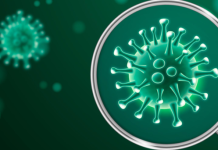The first case of locally-acquired Zika in the continental United States has occurred in Texas, because of course it has. To make matters worse, I guess, the Centers for Disease Control (CDC) stated that the method of transmission was sexual contact, because Zika might as well be added to the always-growing list of pathogens one can acquire while “doing the nasty.”
According to the CDC, the person who was infected with Zika in Texas had sexual contact with someone who had recently been infected while in Venezuela.
CDC Director Tom Frieden told CNN’s Chief Medical Correspondent Sanjay Gupta:
“There have been isolated cases of spread through blood transfusion or sexual contact and that’s not very surprising. The virus is in the blood for about a week. How long it would remain in the semen is something that needs to be studied and we’re working on that now.”
This isn’t necessarily the first time Zika transmission has been linked to sex. During the 2013 Zika outbreak in French Polynesia, a 44-year-old Tahitian man tested positive for Zika in his semen and urine, but not in his blood. In 2008, a microbiologist from Colorado contracted Zika while in Senegal. His wife came down with it a few days later even though she hadn’t left northern Colorado and had not been exposed to any mosquitoes carrying the virus.
The CDC also noted that there have been documented cases of Zika transmission during labor and blood transfusions, as well as laboratory analysis.
Though Zika has been found in breast milk, there is still no confirmation that it can be transmitted to the nursing child during feeding.

Though the virus presents itself like a milder version of dengue fever or chikungunya, Zika is also suspected to be linked to newborn microcephaly, a neurodevelopmental disorder that is normally defined as a head circumference more than two standard deviations below the mean for age and sex. Microcephalics tend to have striking neurological defects and seizures, as well as severely impaired intellectual development.
Another condition that is manifesting in those infected with Zika is Guillain-Barre syndrome, an autoimmune disease that causes the body’s immune system to attack peripheral nerves by mistake, damaging their myelin insulation.
Zika is prompting worldwide concern. The World Health Organization predicts that between 3 and 4 million people across the Americas will be infected with Zika within the next year.
CDC Director Tom Frieden noted that studies based on sexual transmission aren’t easy to conduct, but the CDC is continuing to explore that avenue of infection. Frieden also stated that “the bottom line is mosquitoes are the real culprit here,” even with confirmation that disease can be spread sexually.
There is currently no cure for Zika.
Featured image is in the public domain.





